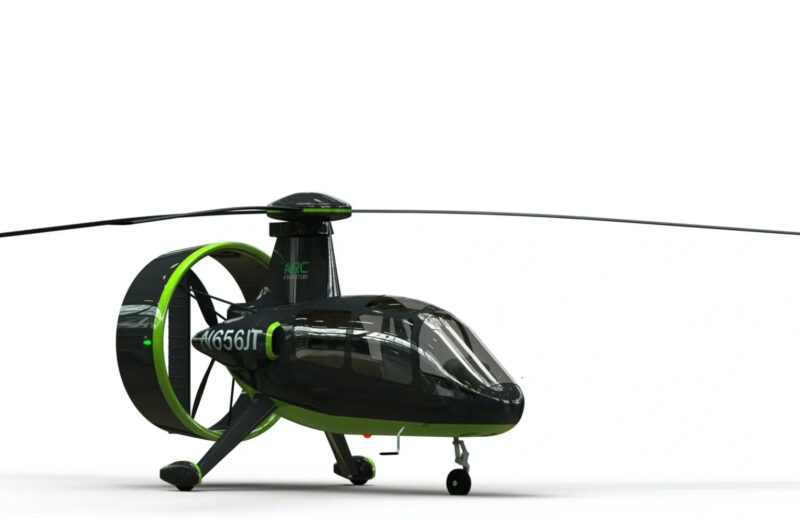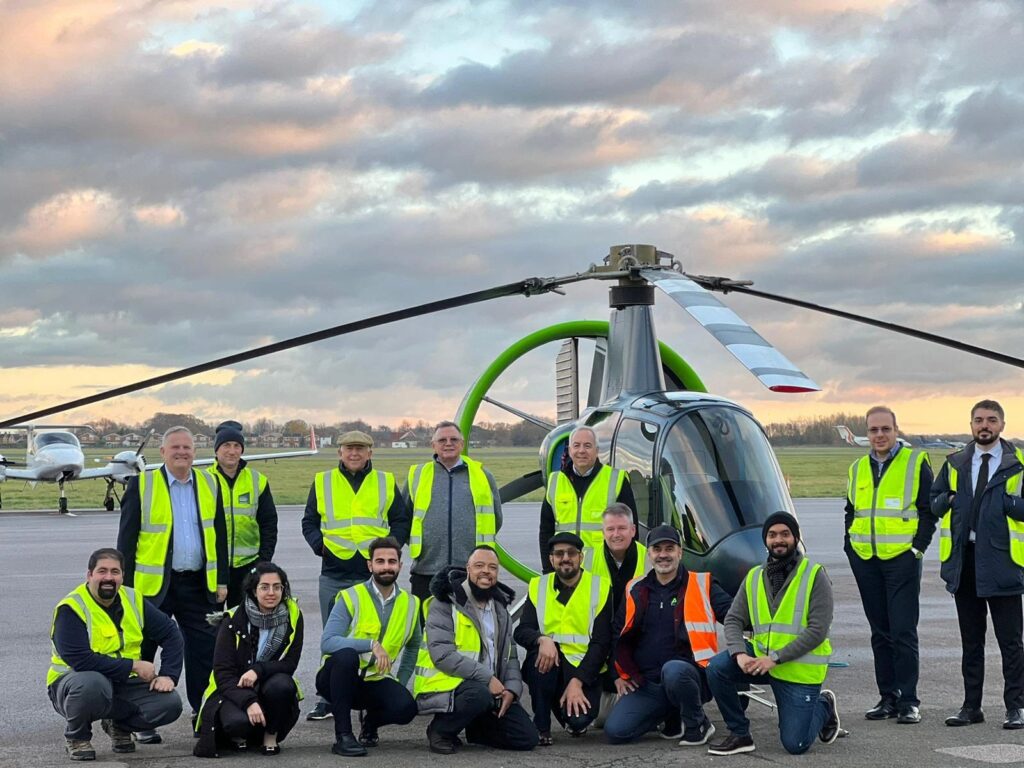The gyroplane: A new/old workhorse of the skies?

On a visit to south east Asia you’d be hard pushed to not see a multitude of Honda Super Cub motorcycles so top heavy with goods the rider is appearing to defy physics by keeping it balanced. It is the most popular motor vehicle of all time, with over 100m units sold worldwide since introduction in 1958.
As well as being affordable, the Super Cub, capable of 188mpg, is also incredibly fuel efficient. Whilst most of the world looks towards electrification, the art of saving fuel through old school lightweight, simple design seems to have fallen out of favour. Bucking that trend is the Pegasus gyroplane under development with UK-based ARC Aerosystems. The firm wants to initially leverage the aircraft as a potential solution to issues in rural transport, especially in underdeveloped and hard-to-reach areas.
As Honda puts it: “It was [co-founder] Soichiro Honda’s burning desire to bring the joy of mobility to people’s lives.” Reaching as many people as possible was a core building block behind the Super Cub. The same goes for the reboot of Pegasus.
Glenn Waters, director of Advanced Technologies at ARC Aerosystems tells us: “We are seeking to enable airborne connectivity between various locations across the globe safely, efficiently, at low cost. And what we mean by low cost, is a total system low-cost. That’s not just low cost of the air vehicle. It’s low cost of all the attendant ancillary things like the infrastructure, facilities, maintenance, support and everything else.”

Super Cubs used as cargo haulers and people carriers are a regular sight in south east Asia, like this one in Ho Chi Minh City, Vietnam. Credit: Wikimedia Commons
“We asked ourselves the question – if we are going to address a need like we propose, and which will be, targeted at a global audience – what would it look like? So we looked at the fundamental need and posed the question – what is the world looking for? We broke that question down into the basic constituents of the total system and asked this question – what does almost every village location in the world possess? We concluded that every village in the world has at least a sports field and a supply of diesel.” Then, we set out on a journey to develop a concept that could work in areas with no infrastructure at all and that would be globally applicable.
The firm has just announced its first sale of five units to an undisclosed Scottish investor who will lease the aircraft to a pilot training school and an aerial service operator. With first deliveries penned in for the first quarter of 2026 the race is on at ARC to achieve this. The firm is set to begin test flights of the Pegasus over the coming months at its facility in Cranfield, UK, with public demonstrations planned at the Farnborough Air Show later this year.
The story behind Pegasus is an unusual one amongst the startup OEMs vying to enter service this decade. The aircraft is the first non-helicopter VTOL aircraft to receive FAA certification, having done so back in the late ’80s. However, it was actually first certified back in 1968 by Transport Canada as a Part 27 rotorcraft, before the certification was transferred some 20 years later. Designed and built by US-based company Pegasus Rotorcraft, it started out life as the Avian 2/180. ARC then acquired the firm, along with the aircraft and its IP. “We have literally tens of thousands of documents of certification for this aircraft,” Waters adds.
Little needs to be done to the aircraft to ready it for test flights aside from some radio and avionics updates, according to ARC. “It’ll need some conspicuity stuff like mode S transponders, the radios will be 8.33kHz capable. But our work in re-establishing the airworthiness is to be as least invasive as possible,” he explains.

The ARC Aerosystems team with Pegasus following initial engine run tests conducted towards the end of last year. Credit: ARC Aerosystems
The ARC team is largely confident due to its approach to certification versus other startup OEMs in the sector. “The eVTOL OEMs have started from a point of zero certification basis, and they’ve had to try to evolve that as they go. We’re in the same tunnel but we entered from the standpoint of already having a certified aircraft, and we are currently working to re-establish its airworthiness,” says Waters.
The Part-27 certification of the Pegasus enables a higher MTOW versus all of the other Gyroplanes currently certified under EASA regulations and also allows pitch angle change of the rotor blades.
This is crucial in allowing ARC to utilise the jump take-off and zero-roll landing capabilities of the aircraft. “If you look at the very first Cierva autogyro – which first flew back in the 1920s and ’30s – it was entirely capable of jump take-off and zero-roll landing. There are lots of films available from that time of the Cierva aircraft, some of which were UK-registered, doing just that,” says Waters.
Is it really a VTOL? Gyroplanes can’t hover like a helicopter. An autogyro’s rotor spins freely, much like a helicopter in autorotation after an engine failure. This means it can’t hover if there is problem on the ground, it has to fly a pattern or divert. Pegasus also needs clear space to take-off in, whilst gyroplanes can take-off almost vertically in the right conditions this is not always the case. But that is also why the aircraft is ideally suited to use cases in remote or developing areas. All is well as long as the local sports team groundsman hasn’t run out of diesel for the mower.
“This concept can operate without any infrastructure development necessary. It can be built on existing production lines with no new technology needed to be developed,” says Waters. “It’s an aircraft that can pretty much achieve 90% plus of the capability of a helicopter are probably around about 70% of the cost.”
It was Soichiro Honda’s fellow co-founder, Takeo Fujisawa who first pushed for the concept that later became the Super Cub. Fujisawa envisioned a bike for the everyman that could work in urban and rural environments. His main requirement was the ability for it to be ridden with one hand so noodles could be carried in the other. “If you can design a small motorcycle, say 50cc with a cover to hide the engine and hoses and wires inside, I can sell it,” said Fujisawa. “I don’t know how many soba noodle shops there are in Japan, but I bet you that every shop will want one for deliveries.”
ARC is making a similar bet with low-infrastructure communities (without the noodles).
Subscribe to our free newsletter
For more deep dives from SAF Investor, subscribe to our email newsletter.






